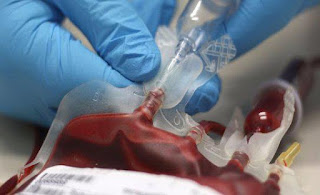Revolutionizing Immunization: Exploring the Nasal Vaccines Market
Introduction
Immunization has long been hailed as one of the most effective public health interventions, preventing the spread of infectious diseases and saving millions of lives worldwide. Traditionally, vaccines have been administered through injections, but recent advancements have brought nasal vaccines into the spotlight. Nasal vaccines offer a promising alternative by delivering antigens through the nasal route, revolutionizing the field of immunization. In this blog, we will explore the nasal vaccines market, its benefits, challenges, and its potential impact on global health.
Benefits of Nasal Vaccines
Nasal vaccines utilize the nasal mucosa as an entry point to the immune system, closely mimicking natural infection pathways. This unique delivery route stimulates both systemic and mucosal immune responses, leading to enhanced protection against respiratory infections. The nasal mucosa contains specialized immune cells, such as IgA-producing plasma cells, which play a crucial role in defending against respiratory pathogens. By targeting this mucosal immunity, nasal vaccines have the potential to provide superior protection against respiratory diseases, including influenza, COVID-19, and other respiratory infections.
Moreover, nasal vaccines offer several advantages over traditional injectable vaccines. They are needle-free, making them more convenient and less intimidating, particularly for children and individuals with needle phobia. Nasal vaccines are also easy to administer and do not require healthcare professionals, potentially reducing the burden on healthcare systems, especially in resource-limited settings. Additionally, nasal vaccines elicit a stronger immune response at lower antigen doses, making them more cost-effective and potentially increasing global vaccine accessibility.
Challenges and Future Prospects
Despite their potential, nasal vaccines face several challenges. The nasal mucosa presents a formidable barrier that limits efficient vaccine absorption, requiring the development of innovative delivery systems and formulations to enhance vaccine effectiveness. Stability and storage conditions are also critical factors, as nasal vaccines must maintain their integrity during transport and storage. Furthermore, regulatory approval processes for nasal vaccines may differ across countries, necessitating harmonization and standardization.
However, ongoing research and development efforts are focused on addressing these challenges. Advances in vaccine formulation, adjuvants, and delivery systems are being explored to optimize nasal vaccine efficacy and improve mucosal immune responses. Innovative technologies, such as nanoparticle-based vaccines, are being developed to enhance antigen stability and delivery. As more studies are conducted and technology advances, nasal vaccines hold great promise for revolutionizing immunization strategies.
Conclusion
Nasal vaccines represent a groundbreaking approach to immunization, with the potential to revolutionize the field of vaccinology. Their ability to stimulate both systemic and mucosal immune responses, along with their convenience and cost-effectiveness, make them a promising tool in the fight against infectious diseases. As research and development efforts continue, it is crucial to support innovation and collaboration to unlock the full potential of nasal vaccines, ensuring a healthier future for global populations.




Comments
Post a Comment